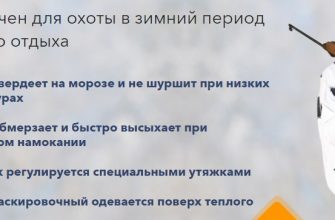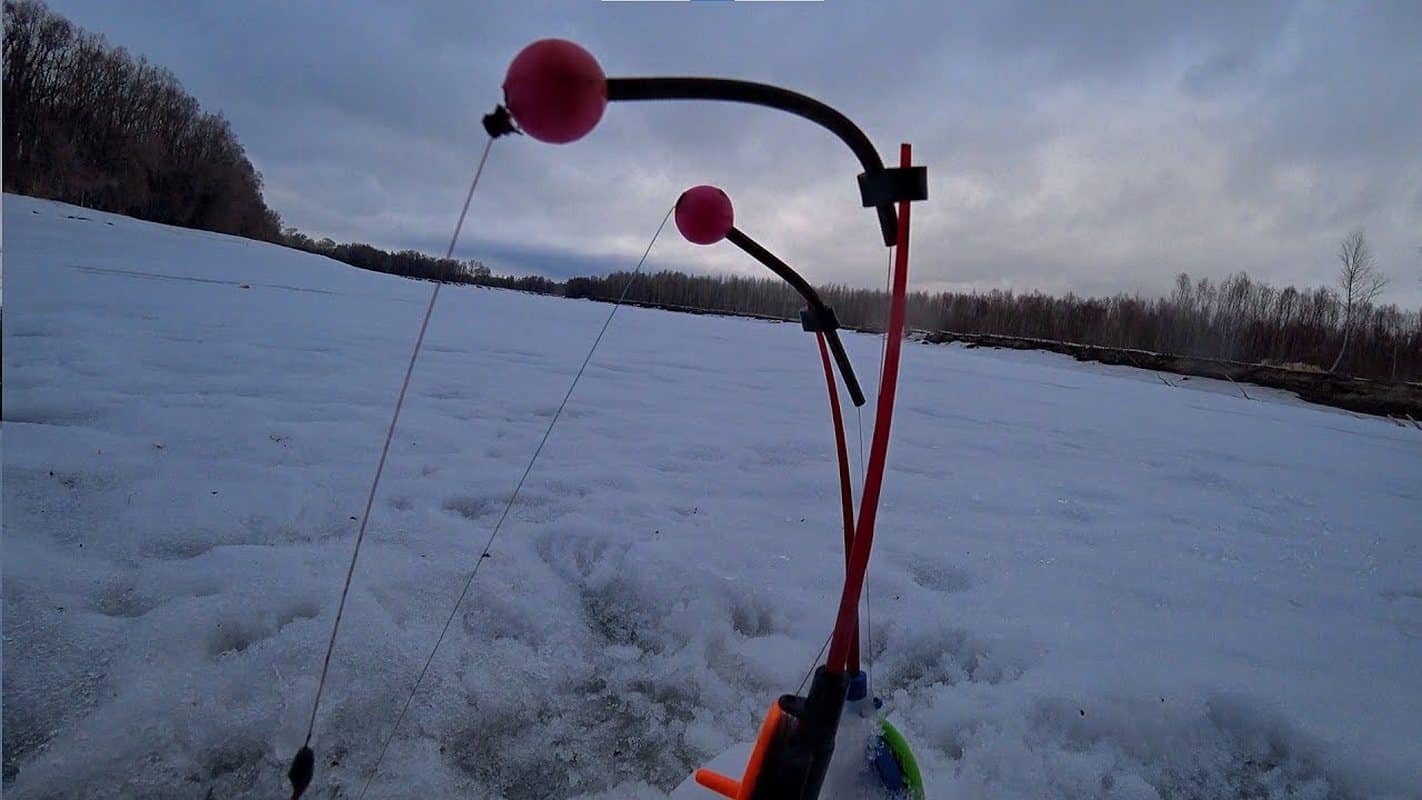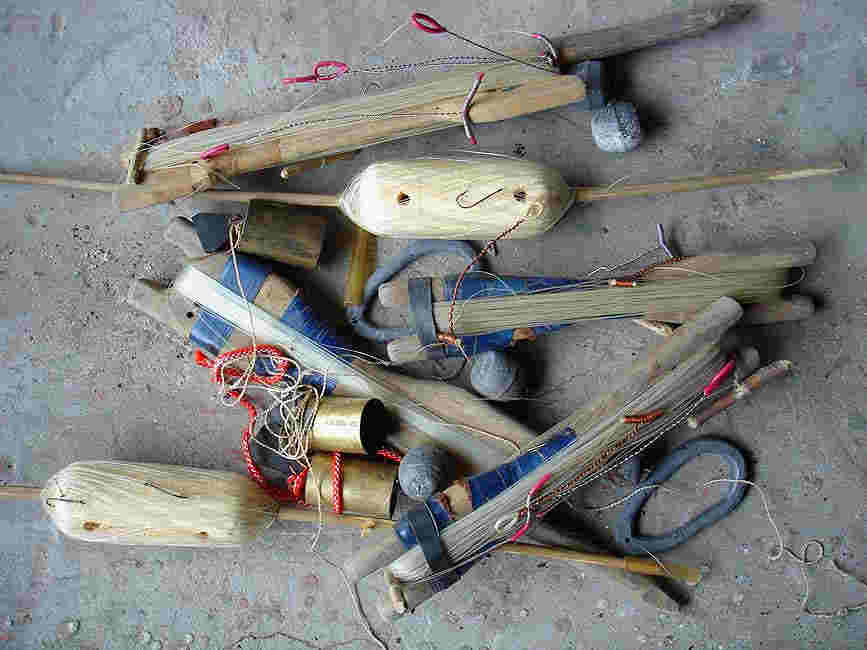Winter fishing has certain differences from summer fishing . But many methods and approaches are used all year round, regardless of the season. This also applies to feeders, which may differ in type and structure, but have the same purpose in winter and summer – to attract fish to the place of fishing.
- When to use feeders for winter fishing
- How does a winter fishing trough work
- What types of complementary foods and types of feeders are used in winter
- How to make feeders for winter fishing with your own hands: photos, drawings, video instructions
- What to look for when choosing purchased feeders
- What to put in the trough in winter
- Fishing in the winter with a feeder on the current and on stagnant bodies of water
- Water bodies with flow
- Water bodies without flow
- Useful tips and secrets for using feeders
- Поделиться ссылкой:
When to use feeders for winter fishing
Different types of fishing feeders are used depending on the conditions of the fishing area and other factors. The variety of winter options is relatively small, for example, the classic cone (dump trough) can be called universal for winter fishing. It is used in stagnant water and for fishing on the current.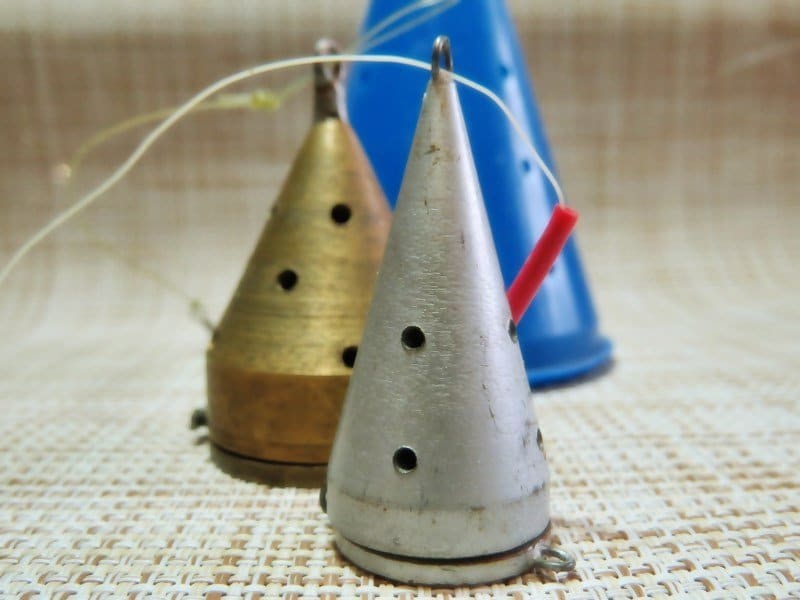
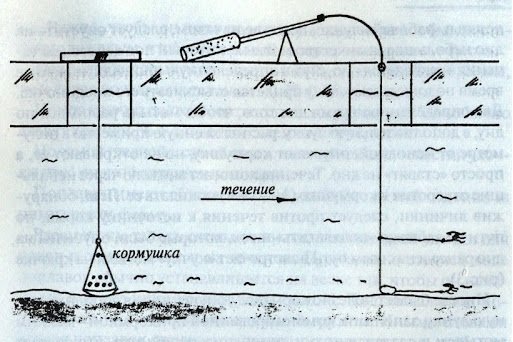
- bream and bream ;
- bleak;
- roach ;
- carp;
- crucian carp;
- ruff.
And also, as an auxiliary component when fishing with live bait rigs:
- perch;
- pike perch;
- pike.
How does a winter fishing trough work
The principle of operation is generally the same – the mixture for bait is placed in a special container attached to the fishing line and lowered into the hole. Then the trough is set to the required depth or completely lowered to the bottom. The mixture is removed from the container (in dump-type feeders), or remains in it (feeder types). The bait is washed out through the holes in the walls of the trough. Fast on current, slower on bodies of water without current. A kind of cloud gradually forms, which attracts the attention of the fish to the place of fishing. The main task of the feeder is to deliver the complementary food to the fishing area for a long time, right on target and without frightening the fish away.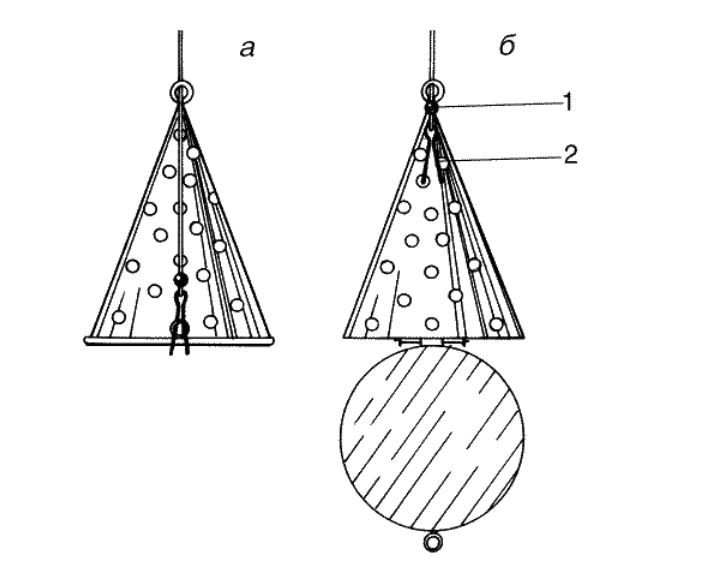
What types of complementary foods and types of feeders are used in winter
The type of bait plays an important role. There are two of them:
- of animal origin – fish food, crushed maggot, fodder bloodworms, etc.;
- vegetable origin – bread, boiled and ground cereals, various cereals.
Sometimes fishermen combine both types, mixing plant and animal types of bait. In some cases, add earth, sand. Bloodworm is considered a universal winter bait. There are two main types of feeders, which differ in their principle of operation:
- The classic cone dump trough is a special option for winter fishing. The principle of operation is that it is lowered to the bottom of the reservoir (or into the desired horizon), with a sharp movement, the lower part of the device opens and the bait falls to the bottom. The advantage of such a feeder is the ability to use any bait, including layers of several types at a time, and also layers of complementary food will fall into the water. You can lower it not completely to the bottom, but into any necessary horizon and shake out the contents with a sharp movement of your hand. A cloud is formed that covers a large area and attracts fish to the fishing area. This type of winter feeder is rarely used to shake out the bait at the very bottom and for jet fishing. For fishing from the bottom and on the current, feeder feeds are used.

- Feeder summer trough (spring type) is also used in winter at a depth in the current. It sinks well to the bottom due to its own weight. Unlike a cone feeder, which is tied to the same line as the hook, it is recommended to lower the feeder feeder a little further away. The pluses include the speed of its lowering to the bottom, it is less carried away by the current, not so fast and, what is important, the feed is evenly washed out. Such feeders are used for winter fishing for bream, roach and other fish on a winter feeder, rocker arm, helicopter, harvester and other types of rigs with feeders.
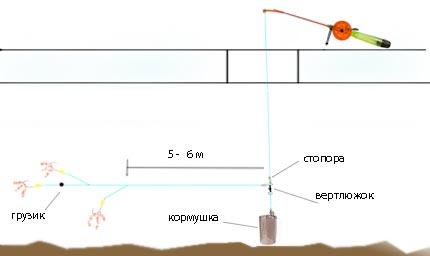
How to make feeders for winter fishing with your own hands: photos, drawings, video instructions
There is a large selection of feeders in fishing shops, but many anglers prefer to make them with their own hands. At the same time, there are 2 main approaches to making homemade feeders: you can make disposable and reusable options. Disposable winter feeders that can be made right on the fishing trip:
- Cone made of paper . To make it, you need to roll a sheet of paper in the form of a bag. Place a sinker on the bottom, fill with bait, secure with fishing line. The positive aspects of such a feeder are budget, availability of materials, it keeps its shape well, silently sinks to the bottom.

- Forage from a polyethylene bag. To make a feeder, you need a narrow bag, at the bottom of which a sinker is placed. It should be secured with a thread or fishing line. Pour the food on top and then gently wrap the bag. When the improvised feed is at the desired depth, you just need to pull the fishing line so that the contents turn out.
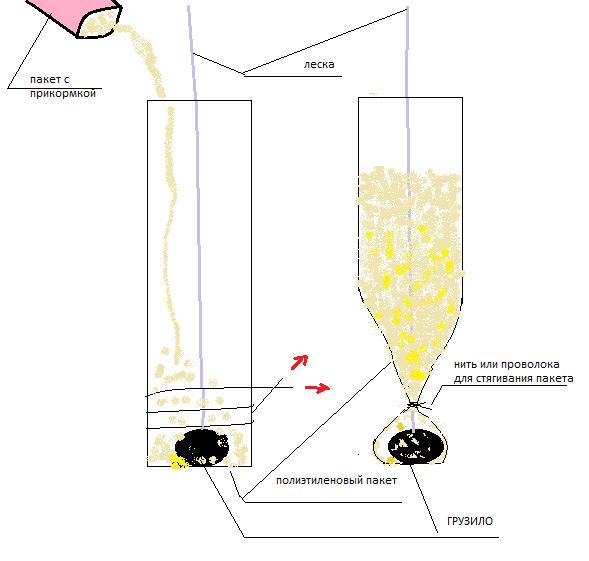
How to make a reusable ice fishing feeder:
- From a metal sheet . Cut a workpiece from a sheet of metal, roll it into a cone. Drill holes in the walls. The lid is also cut from a sheet of metal. To connect the housing to the cover, drill holes and thread the wire. Attach a sinker to the sharp end or pour molten lead or other metal on the bottom.

- Homemade syringe feeder . Cut the syringe to the desired length. Skip the line in the center. Put a load in the lower part. Make holes in the walls. It is convenient to lay the bait in such a feeder in layers and tamp it with a piston.
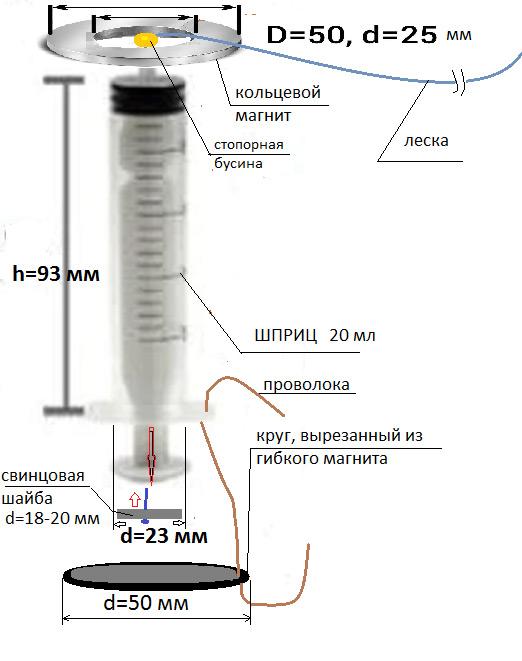
DIY dump trough for fishing:
https://youtu.be/B2mDuI0LAFI Self-made feeder – dump truck for winter fishing: https://youtu.be/wIJyvCfsUyo Sports feeder for ice fishing, made by hand – expert video: https://youtu.be/fS8lR_n_r9I Mini DIY winter feeder at home: https://youtu.be/auVOqjd3jBQ Feeder winter feeder for DIY flow: https://youtu.be/4E47jmbIpxA
What to look for when choosing purchased feeders
The choice of a winter trough for fishing depends on the process conditions. The main condition is that it must fully fulfill its functions, i.e. you need to understand in what conditions you plan to use the feeder. For calm waters, conventional cone feeders are used. Metal structures have a drawback – when the lid is opened, they emit a characteristic clang, which can scare off cautious aquatic inhabitants. Another option is a staple lock design. The opening takes place almost silently due to the sharp jerking of the line. The locking force of the lock can be adjusted by changing the bend of the bracket. If bait of animal origin is used, then feeders are purchased with larger holes. If there is a significant current in the body of water,it is recommended to use volumetric rectangular feeders or rectangular / triangular feeders with lead shipment.
What to put in the trough in winter
You can use feeders to catch different fish. However, it is worth considering their preferences:
- Bream . For it, a mixture of plant and animal components is introduced in a 70/30 ratio. The composition may include: corn, wheat, peas, flour, maggots, bloodworms, small worms.
- Crucian carp, carp . Smell is very important for carp fish. For this reason, sunflower cake must be included in the bait.
- Roach, bleak . For successful fishing, maggot and bloodworms need to be added to the plant components.
- Perch, ruff . These fish prefer animal bait, so it is worth adding finely chopped meat to the main composition.
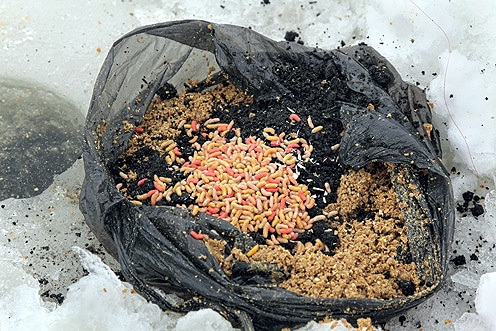
- bloodworm;
- muckworm;
- maggot.
https://youtu.be/I4VFELDr7Bk The most catchy and effective nozzle is the bloodworm. It is recommended to put at least 3 pieces on the hook. Maggots are used more often in the river. Trophy fish are caught with a dung worm. Semolina, with the addition of beef blood, is also used in some waters. Ready-made commercial baits show efficiency only if they are selected correctly. Winter species can be distinguished by several characteristics:
- dark color;
- fine-grained grinding;
- the presence of a small amount of cake;
- low flavor content.
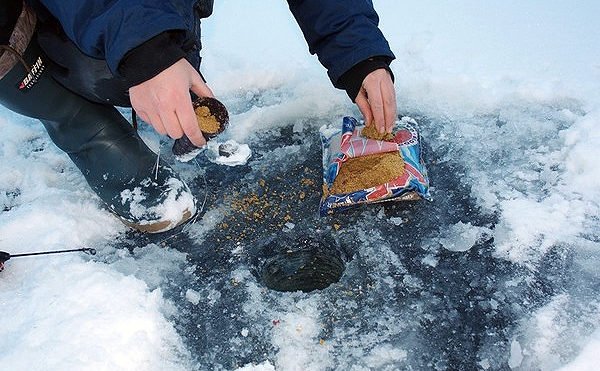
You can make the bait mixture more effective with the help of a feed bloodworm. Live larvae quickly burrow into the ground, creating movement there, thereby arousing the interest of the fish.
Fishing in the winter with a feeder on the current and on stagnant bodies of water
Groundbait technique and methods of bait delivery to its destination depends on several factors:
- the depth of the reservoir in the place of fishing;
- the presence and strength of the current.
Water bodies with flow
If there is a current in the place of fishing, it is recommended to use maggot, bloodworms and with an addition in the form of soil (earth). This will help make the feeder heavier so that it sinks completely to the bottom. However, if the current is fast, then it is worth drilling an additional hole slightly upstream and lowering the bait there. You need to choose a feeder heavy – metal or with a metal fill / sinker.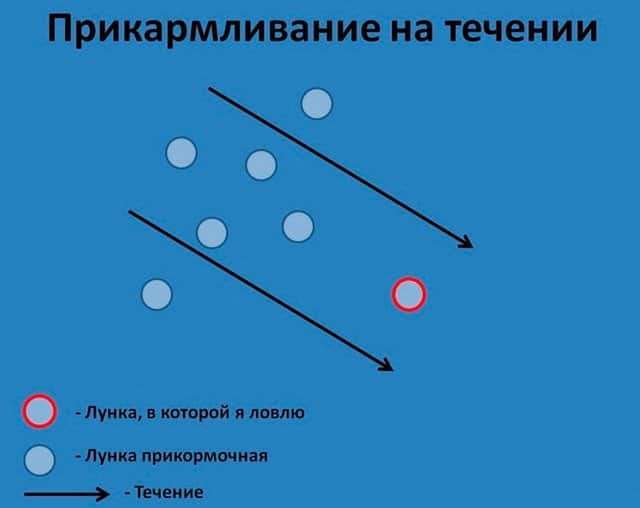
Water bodies without flow
In stagnant water, the trough is rarely used. If the depth at the place of fishing does not exceed 3 meters, then balls are formed from the bait mixture and lowered by hand directly into the hole. But for some species of fish that stand in half water or near the ice itself (rudd, roach, blue bream, etc.), this method is not suitable, since the ball immediately sinks to the bottom, disintegrating there. The efficiency in this case is very low. It is best to use a classic plastic cone feeder, which is light enough not to sink to the bottom and hangs in the required horizon.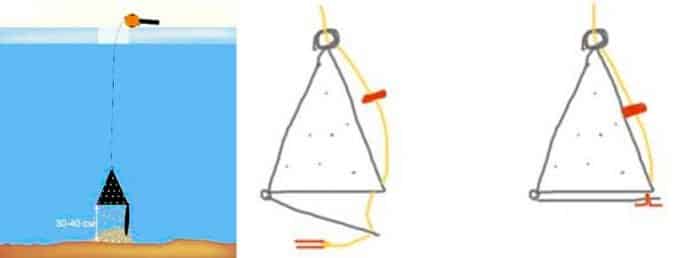
Useful tips and secrets for using feeders
There are a few tips when using a winter feeder:
- If the trough is used as a bottom trough, then there is no need for a hole in the bottom. However, you need to be sure that it will fall correctly on the bottom.
- In the lateral parts, the holes must be of the appropriate size so that nothing prevents the bait from being washed out of the device.
- The bottom of the trough should be heavy enough to keep it straight. Otherwise, the effect of propagation of food in the water column will be invisible.
- The consistency of the feed mixture should be such that it is easily washed out of the trough, but not too quickly.
Summing up, we note that when fishing peaceful fish (especially carp) from ice in winter, bait is required. In conditions where hand feeding is not effective, various types of winter feeds are used.

